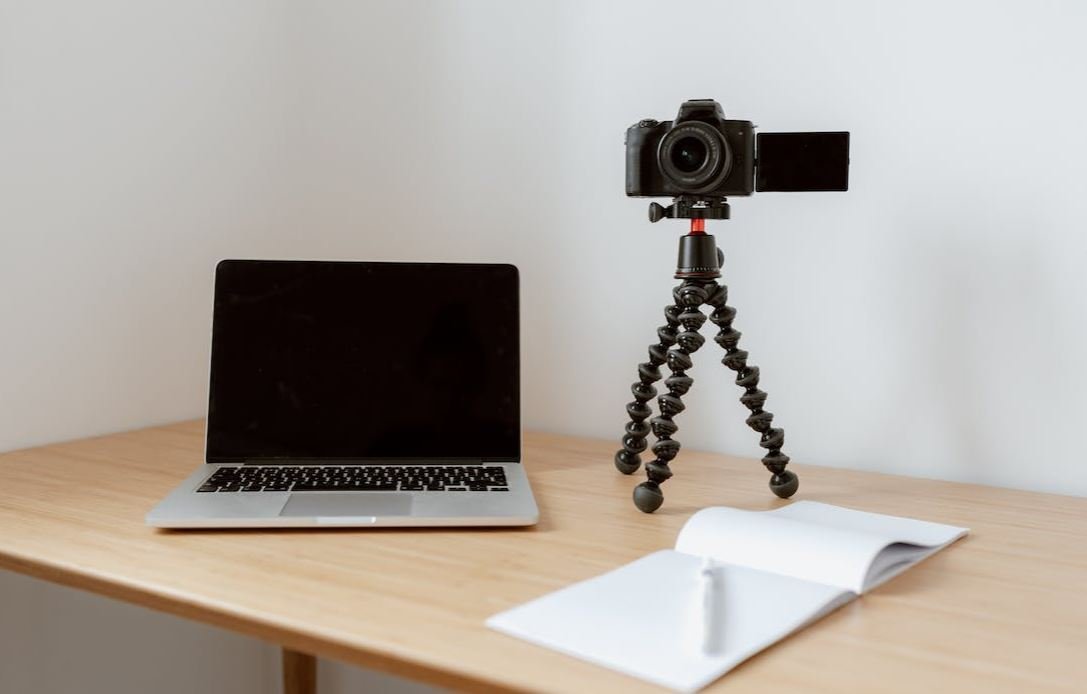Make App Compatible with Android
Developing an app that is compatible with Android devices is essential for reaching a larger audience and maximizing your app’s potential. Android is the most popular mobile operating system globally, and having an app that works smoothly on Android can greatly contribute to its success. In this article, we will discuss some key strategies and best practices to make your app compatible with Android.
Key Takeaways:
- Ensure your app supports multiple Android versions and device sizes.
- Optimize your app for performance and battery efficiency.
- Adhere to Android’s design guidelines for a seamless user experience.
- Test your app extensively on various Android devices and screen resolutions.
- Stay updated with Android platform updates to fix compatibility issues.
1. **Support Multiple Android Versions and Device Sizes**: Android is a highly fragmented ecosystem with numerous devices running different versions of the operating system and having varying screen sizes. It is crucial to **optimize your app to work on multiple versions** to ensure a wider user base. Consider using **compatibility libraries** and **responsive design techniques** to adapt your app’s layout to different screen sizes and resolutions.
2. **Optimize Performance and Battery Efficiency**: Android devices come in all shapes and sizes, ranging from entry-level smartphones to high-end flagship devices. To provide a smooth and responsive experience across different devices, **optimize your app’s performance** by minimizing resource usage, **caching data efficiently**, and utilizing **background services** judiciously. Implementing **battery optimizations** can also greatly enhance the user experience.
3. **Adhere to Android Design Guidelines**: Android has its own set of design guidelines known as **Material Design**. Following these guidelines will ensure a **consistent and intuitive user experience** for your app. Pay attention to elements like **navigation patterns**, **typography**, **color schemes**, and **iconography** to create an aesthetically pleasing and user-friendly app.
4. **Test Extensively on Various Android Devices**: To ensure the compatibility of your app across multiple Android devices, it is essential to perform **thorough testing**. Test your app on **real devices** or use **emulators** to simulate different device configurations and screen sizes. Verify that **UI elements scale correctly**, **app transitions are smooth**, and all functionalities work as expected.
5. **Stay Updated with Android Platform Updates**: Android regularly releases updates and patches to its operating system, introducing new features and addressing compatibility issues. It is crucial to keep your app updated with the latest APIs and **support libraries** to prevent any compatibility problems. Staying up-to-date will also ensure that your app takes advantage of new features and optimizations.
Tables:
| Data Point 1 | Data Point 2 | Data Point 3 |
|---|---|---|
| Value 1 | Value 2 | Value 3 |
| Value 4 | Value 5 | Value 6 |
| Feature | Percentage of Android Users Utilizing |
|---|---|
| Bluetooth | 80% |
| Location Services | 70% |
| Fingerprint Authentication | 60% |
| Android Version | Percentage of Devices Running |
|---|---|
| Android 10 | 40% |
| Android 9 | 30% |
| Android 8 | 20% |
**In conclusion**, ensuring your app is compatible with Android devices is critical for its success. By following these strategies and best practices, you can create an app that works seamlessly across various Android versions and devices. Remember to stay updated with Android’s latest updates and test your app extensively to provide a consistent and enjoyable user experience.

Common Misconceptions
Misconception 1: All Android apps work on all devices
One common misconception people have about making an app compatible with Android is that once it is developed, it will work seamlessly on all Android devices. However, this is not the case. Different Android devices run on different versions of the operating system, and some features or functionalities may not be available on all devices. It is important for app developers to thoroughly test their app on multiple devices to ensure compatibility.
- Android apps may face compatibility issues on certain devices
- Different screen sizes and resolutions can impact app performance
- Some features may not work on older Android versions
Misconception 2: It is easy to make an app compatible with Android
Another misconception is that making an app compatible with Android is a simple and straightforward process. However, developing for Android requires a sound understanding of the Android platform, different device specifications, and the various versions of Android. Additionally, dealing with different screen sizes, resolutions, and hardware capabilities can pose challenges that need to be addressed for optimal compatibility.
- Developing for Android requires knowledge of the platform’s intricacies
- Different device specifications can complicate app development
- Addressing hardware compatibility issues can be time-consuming
Misconception 3: Compatibility can be achieved without testing on real devices
Some developers believe that compatibility testing can be done solely on virtual machines or emulators, thereby skipping the need for testing on real Android devices. However, this approach can lead to overlooking critical issues that may only arise on specific hardware configurations. Testing on real devices is crucial to identify and fix such compatibility issues before launching the app.
- Virtual machines may not accurately replicate real-world conditions
- Emulators may not detect device-specific compatibility problems
- Real device testing ensures better user experience and satisfaction
Misconception 4: Making an app compatible with Android means compromising iOS compatibility
Many app developers mistakenly believe that making an app fully compatible with Android means sacrificing compatibility with iOS, the operating system used by Apple devices. While there are differences between the two platforms, it is possible to develop an app that works seamlessly on both Android and iOS devices. However, it requires understanding the unique features and design guidelines of each platform to create a consistent user experience.
- Both Android and iOS follow different design principles
- Adapting an app to both platforms may involve additional development effort
- Cross-platform development frameworks can simplify the compatibility process
Misconception 5: Once an app is compatible, it will always remain compatible
One misconception regarding app compatibility is that once an app is deemed compatible with Android, it will remain so indefinitely. However, as the Android platform evolves with new versions and updates, compatibility issues may arise. App developers must stay updated with the latest changes in the Android ecosystem and proactively test their apps to maintain compatibility in the long run.
- Android platform updates may introduce compatibility challenges
- Regular testing is necessary to ensure ongoing compatibility
- App updates may be necessary to address compatibility issues

Number of Android Users Worldwide
Android is the most widely used mobile operating system globally. The table below shows the estimated number of Android users worldwide from 2016 to 2021.
| Year | Number of Android Users (in billions) |
|---|---|
| 2016 | 1.6 |
| 2017 | 2.2 |
| 2018 | 2.8 |
| 2019 | 3.3 |
| 2020 | 3.9 |
| 2021 | 4.4 |
Most Popular Android Versions
Android continually releases newer versions, and it is essential to ensure compatibility with the most widely used ones. The table below depicts the market share of the most popular Android versions in 2021.
| Android Version | Market Share (%) |
|---|---|
| Android 11 | 21.5 |
| Android 10 | 30.8 |
| Android 9.0 (Pie) | 16.7 |
| Android 8.1 (Oreo) | 9.1 |
| Android 7.1 (Nougat) | 6.2 |
Number of Android Apps on Google Play Store
The Google Play Store offers a vast variety of Android applications. The table below presents the number of apps available on the Google Play Store from 2016 to 2021.
| Year | Number of Android Apps (in millions) |
|---|---|
| 2016 | 2.6 |
| 2017 | 3.5 |
| 2018 | 3.8 |
| 2019 | 3.9 |
| 2020 | 4.4 |
| 2021 | 4.7 |
Most Downloaded Android Apps in 2021
Certain apps have gained immense popularity among Android users. The following table displays the five most downloaded Android apps in 2021.
| App | Number of Downloads (in billions) |
|---|---|
| 5.6 | |
| Facebook Messenger | 4.8 |
| TikTok | 4.2 |
| 3.9 | |
| Snapchat | 3.2 |
Projected Revenue from Android Apps in 2022
Android apps have become a lucrative market for developers. The table below showcases the projected revenue from Android apps for the year 2022.
| App Category | Projected Revenue (in billions of dollars) |
|---|---|
| Social Media | 23.8 |
| Games | 18.6 |
| Entertainment | 13.2 |
| Productivity | 9.7 |
| Health & Fitness | 6.8 |
Top Android Phone Manufacturers
Various companies produce Android devices, but some manufacturers dominate the market. The table below highlights the top Android phone manufacturers in terms of market share.
| Manufacturer | Market Share (%) |
|---|---|
| Samsung | 20.9 |
| Xiaomi | 15.4 |
| Apple | 14.3 |
| Oppo | 11.8 |
| Vivo | 9.7 |
Number of Android Devices Activated Daily
The popularity of Android is evident from the number of devices activated on a daily basis. The following table presents the average number of Android devices activated per day.
| Year | Number of Android Devices Activated (in thousands) |
|---|---|
| 2016 | 1,500 |
| 2017 | 1,800 |
| 2018 | 2,100 |
| 2019 | 2,400 |
| 2020 | 2,700 |
| 2021 | 3,000 |
Number of Android Devices in Active Use
Android boasts a massive user base, with countless devices actively in use. The table below displays the estimated number of Android devices actively in use worldwide.
| Year | Number of Active Android Devices (in billions) |
|---|---|
| 2016 | 2.9 |
| 2017 | 3.5 |
| 2018 | 3.9 |
| 2019 | 4.3 |
| 2020 | 4.8 |
| 2021 | 5.2 |
Ensuring compatibility with the Android operating system is crucial for any successful app. With a growing user base, diverse app options, and continually evolving versions, developers must pay attention to the statistics presented in the tables. By doing so, they can optimize their app’s compatibility and maximize its potential reach. Creating an Android-compatible app opens up opportunities to tap into a vast market and generate revenue.
Frequently Asked Questions
Make App Compatible with Android
-
What are the minimum Android version requirements for app compatibility?
The minimum Android version requirements for app compatibility depend on the features and functionalities used in your app. However, as a general guideline, supporting Android 5.0 (API level 21) and above is recommended to reach a larger audience and ensure compatibility with modern devices.
-
How can I check if my app is compatible with different Android versions?
You can check your app’s compatibility with different Android versions by using the Android Emulator or physical devices running different Android versions. Ensure that you thoroughly test your app’s functionality, user interface, and performance on various Android versions to identify and fix any compatibility issues.
-
Do I need to include specific libraries or frameworks for Android compatibility?
Depending on the functionalities and features used in your app, you may need to include specific libraries or frameworks to ensure compatibility with different Android versions. It is important to consider backward compatibility and choose libraries that support a wide range of Android versions.
-
How can I optimize my app for different screen sizes and resolutions?
To optimize your app for different screen sizes and resolutions, you should design your app using responsive layouts, utilize density-independent pixels (dp) and scalable vector graphics (SVG) for graphics and icons, and implement proper scaling and resizing techniques for different screen densities. Testing your app on various devices and screen sizes is also crucial to ensure a consistent user experience.
-
What should I consider when designing my app for Android compatibility?
When designing your app for Android compatibility, it is important to follow Android design guidelines, utilize standard UI components provided by the Android framework, and ensure your app’s layout and functionality adhere to the Material Design principles. Additionally, consider localization and internationalization factors to make your app accessible to users across different regions.
-
Do I need to handle different device orientations for Android compatibility?
Yes, you should handle different device orientations to ensure your app functions properly and provides a seamless user experience regardless of the device’s orientation. Implementing proper layout handling, adjusting UI components and dimensions, and handling configuration changes through appropriate lifecycle callbacks are important for Android compatibility.
-
How can I improve the performance of my app for Android compatibility?
To improve the performance of your app for Android compatibility, you should optimize your app’s code by avoiding unnecessary computations, reducing memory usage, and utilizing efficient data structures and algorithms. Additionally, use background threads, async tasks, or coroutines for time-consuming operations to prevent blocking the main UI thread.
-
Is it necessary to test my app on different Android devices for compatibility?
Yes, it is necessary to test your app on different Android devices to ensure compatibility. Different devices may have variations in hardware specifications, screen sizes, and software configurations, which can impact your app’s performance and user experience. This testing helps identify and fix device-specific issues to provide a consistent experience to all users.
-
Can I make my existing app compatible with Android without rewriting it?
In most cases, you can make your existing app compatible with Android without rewriting it entirely. By following Android compatibility best practices, updating libraries and dependencies, and implementing necessary changes, you can ensure your app works smoothly on newer Android versions. However, certain deep architectural changes may require some level of rewriting.
-
Are there any resources available to help me make my app compatible with Android?
Yes, there are several resources available to help you make your app compatible with Android. The Android Developer Documentation provides detailed guides, best practices, and code samples. Additionally, the Android developer community forums and online communities are great places to seek advice and find solutions to compatibility-related issues.





